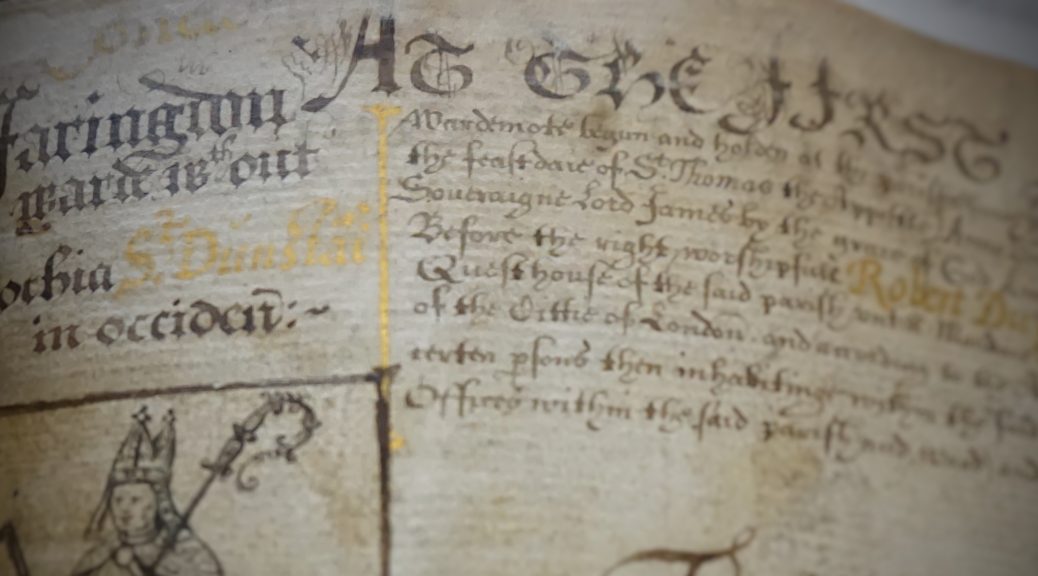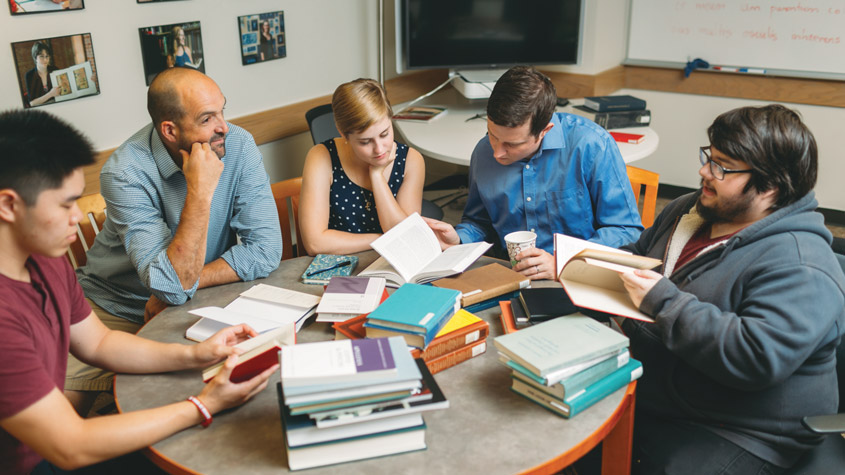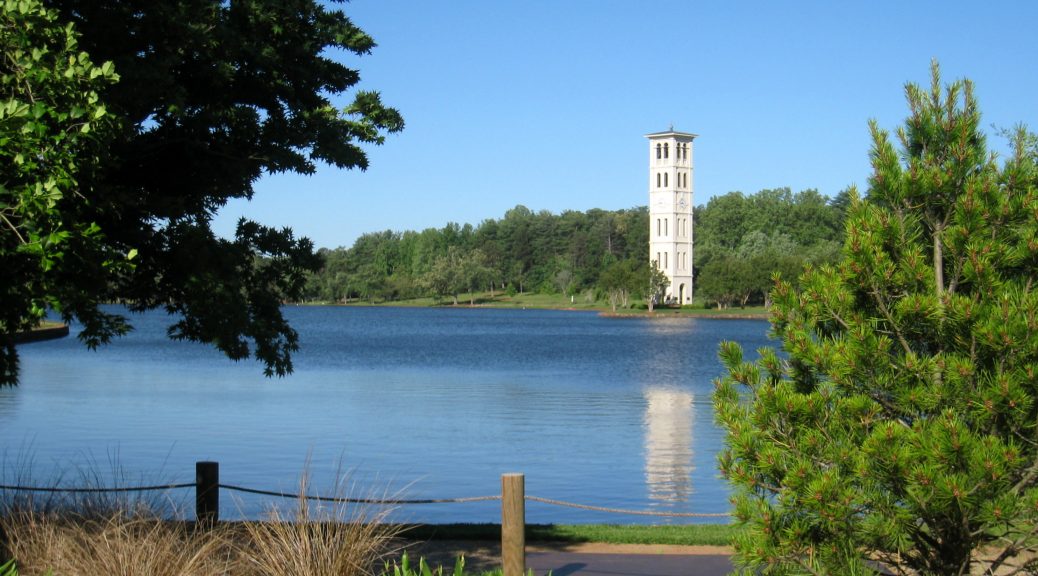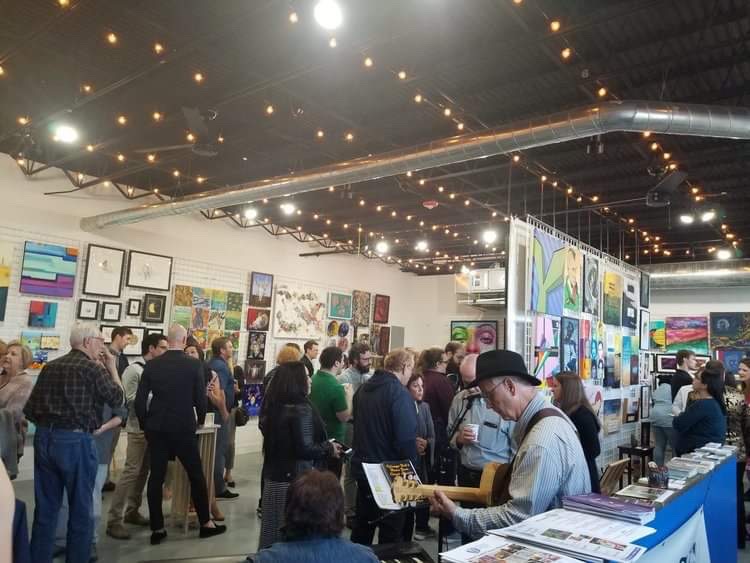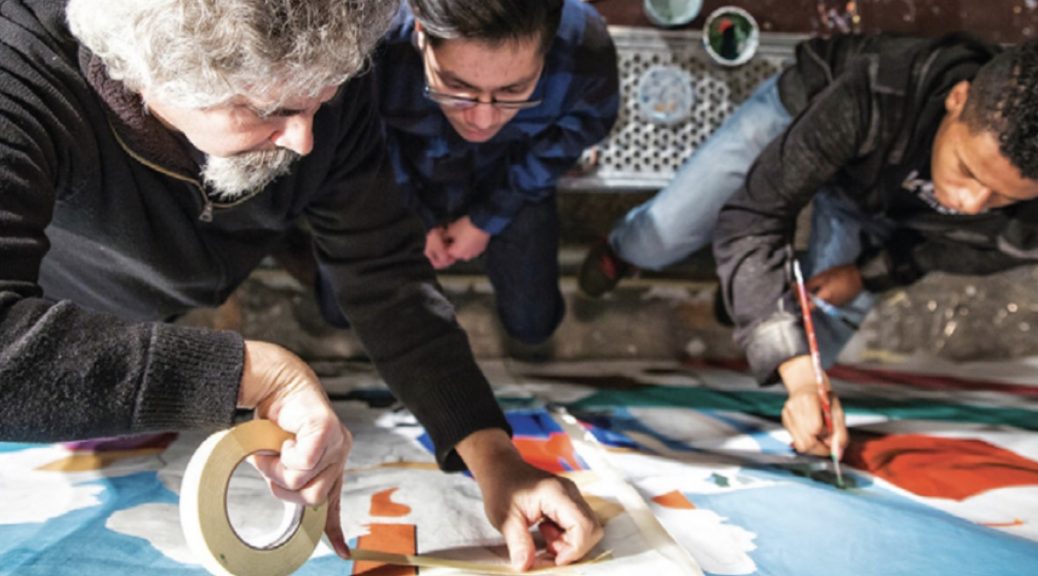September 13th is the deadline for proposed posters on the topic of music teaching and learning. Top-scoring poster creators will be invited to give a presentation. The conference is in January. Please see the FMEA website for more information. As you plan, you may avail yourself of the CURAH resources on writing an abstract and making a poster.
Undergraduate Poster Session at Loyola – CFP by Sept. 6
Loyola University’s History Graduate Student Association’s annual one-day conference (in Chicago on November 2) welcomes undergraduate poster submissions with a deadline of September 6. The theme of the conference is “Conscience-Driven History: Challenging Pasts, Public Spaces, and Memory.”
Here are CURAH’s tips for writing a conference abstract.

Face to Face and Hand to Hand: Undergraduate Archival Study at the LMA
These days, study of the archives often begins with digital images, but an in-person visit to an actual manuscript remains a powerfully transformative scholarly experience, especially for undergraduates. Sheridon Ward, Ohio State University ’21, was lucky enough to spend time working through a massive and dense wardmote inquest book at the London Metropolitan Archives (the LMA). Sheridon has a double major in Medieval & Renaissance Studies along with Evolution, Ecology and Organismal Biology. CURAH caught up to her after her visit to the LMA.
CURAH: Tell us about your project.
Sheridon: During the autumn semester of 2018, I took a class that explored popular culture in 16th and 17th century London with Professor Chris Highley. As the final project, we were assigned to write an article for the Map of Early Modern London (MoEML), a map based on the Agas map that was drawn around 1561 and reprinted in 1633. Professor Highley introduced me to wardmote inquest books as a possible theme-based entry for MoEML, specifically the St. Dunstan in the West inquest register. Though it started as more of a term paper than anything else, I have continued working on the project since then, and I finally got to visit the book itself when I was in Europe over the summer.

Originally, I worked using photos that Professor Highley had taken during his visit at the LMA, and I started to decipher the pages in the massive volume that spans from 1558 to 1823. I only studied pages within the early modern period in the first volume. These pages detail the sessions of the wardmote inquest for the Faringdon Without Ward. It names the inquest members, lists prominent businessmen (the licensed and unlicensed victuallers–sellers of alcohol– for example), and then “presents” people who have committed offenses to the Lord Mayor of London for redress. These offenses can range from petty complaints against poultry dealers for their baskets protruding too far into the road to accusations of adultery.
Overall, my archive project summarizes and explores the wealth of knowledge of everyday life that can be found in the pages of the wardmote inquest book. It reveals their priorities and values, how government on the smallest level worked, and how they systematically and scrupulously organized these sessions. Additionally, it addresses questions of social mobility and social standing by studying how aldermen were affected by their participation and what infractions were and weren’t punished.
CURAH: What are the easiest and hardest things about the work you’re doing?
Sheridon: The greatest obstacle that I faced during this project was unquestionably deciphering the secretary hand in the documents and coping with the fact that English spelling wasn’t yet standardized. I frequently had to use the OED Online to verify the spelling of the word that I thought I was seeing in order to link it to the modern spelling of the word.
Another obstacle was the monotony of the court proceedings. While snippets of information were fascinating to read, most of the items dealt with defective pavements or improper weights and measures. When each sentence is a struggle to decipher, it makes skimming for the more unique items much more difficult.
The easiest part of my research was finding the resources that I needed. Prof. Highley would send me frequent emails with articles related to wardmotes, and the LMA created a welcoming environment for looking at these documents. I was originally intimidated by handling a document so old, and I was terrified that they wouldn’t even let me into the archives to look at the document, but I was surprised at how painless the process was even though I’m just an undergraduate.
CURAH: What kinds of things have you learned, about the early modern period, about scholarship, or about yourself?
Sheridon: Through this project, I’ve learned a lot about early modern social structures and how they parallel our current structures and preoccupations. When I was exploring the part of London that I was studying, I came across a sign that listed the current aldermen of the Faringdon Without Ward. While some of these aldermen are now alderwomen, it was surprising to learn that these government structures still exist so similarly 400 years later.
I also learned that no matter how much passion and inspiration you have for a project in scholarship, you still need determination and discipline. Otherwise, you miss those small snippets of unique stories and information that actually breathe life into the document. And although technology has evolved to give scholars greater access to important materials, nothing compares to handling the material artifact itself. It provides a wealth of information in its own right, even before you read the words on the page.
CURAH: Have you made any discoveries along the way?
Sheridon: While I haven’t found any groundbreaking information, one thing that struck me was just how intrusive some of these documents seem. The extent to which the rest of the community is involved and watchful of everyone else seems like an invasion of privacy to my modern sensibility, but it was entirely normal then. They kept track of who came to church regularly and reported people who failed to attend church as “recusants.” However, even though this is the type of issue that would be presented to the Lord Mayor, the frequency with which some people were reported seems to suggest that it wasn’t effectively handled or simply wasn’t a priority.
Henry Lusher, for example, appears almost every year as a recusant from 1621 to 1651. However, in 1622, he was named as a petty juryman, and the fact that his recusancy continues for likely more than 30 years is puzzling and raises questions as to how important regular church attendance really was in the early modern period.
CURAH: How do you imagine this archive project will help you in your career goals?
Sheridon: Learning how to read secretary hand early on in my career is a very valuable skill to have, and I have gained experience in reading court documents that are more informal and less bogged down with technical terminology as kind of an introduction to other handwritten legal documents.

Faculty Mentor Award nominations due November 8
We are calling for nominations for our 2nd annual Arts and Humanities Faculty Mentor Award, honoring exemplary faculty mentors of undergraduate researchers in our fields. The award carries a $1,000 prize along with public recognition by CUR. The nomination process is being handled by the national office. In brief, here’s how it will work. All CUR members with at least five years of post-grad teaching in the arts or humanities are eligible.
- Phase I: A letter of nomination from an appropriate administrator (President, Provost, etc.) plus a 3 page CV for the candidate — No self nomination permitted and only one nominee per campus. The Phase I deadline is November 8, 2019. Finalists will be notified by December 20.
- Phase II: Finalists from Phase I will submit a five page personal narrative and two recommendation letters from current or former undergraduate student mentees. The Phase II deadline is February 21, 2020. The winner will hear by the end of March, 2020.
Materials should be submitted as a single PDF to Lindsey Currie (lcurrie@cur.org), with a copy to submit@cur.org. For a more extended description of the process, please consult the website for the award at the national office.
Please circulate this information among your colleagues to ensure this important award has a substantial pool of distinguished candidates!
Apply for an NEH Humanities Connections Grant – Sept. 19 deadline
September 19 is the 2019 deadline for applications to the only NEH grant that specifically requires undergraduate research: the Humanities Connections Grant (there are two versions: planning and implementation). Inaugurated in 2016, the NEH Humanities Connections grants support collaborative curricular projects and programs involving different departments at the same institution. They also must “incorporate meaningful student engagement activities such as undergraduate research projects.” Now is the perfect time to begin planning an application for next year. And if you’re in the final stages of a proposal for this year, you might appreciate these insights from CURAH councilor Amy Woodbury Tease (Norwich University) about her current NEH grant: Developing an Interdisciplinary Curriculum to Foster Citizen Scholars.
Why Undergraduate Research is Perfect for Gen Z: New Major at Furman University Integrates Original Scholarship into the Humanities Curriculum
In the past, undergraduate research in the humanities favored independent projects and one-on-one mentorship. But these “unbundled” opportunities are giving way to a more systematic approach. Original scholarship is increasingly being built into the curriculum. A good example is the new interdisciplinary major in Women’s, Gender, and Sexuality Studies (WGSS) at Furman University in Greenville, SC. Furman’s new WGSS major is deliberately centered on mentored undergraduate research in combination with internships. These experiences help undergraduates translate their academic and political interest in feminism, gender identity, and LGBT issues into meaningful careers and lifelong civic engagement.
The perfect major for Gen Z
Furman’s new major responds to a broader trend: Gen Z’s urgent interest in inclusion and gender equity. Students entering college now have watched #metoo rock Hollywood, disrupt industry. They have seen it transform the conversation in both higher education and politics. They were in high school when the first female presidential candidate from a major political party lost the White House to a male candidate accused of sexual assault. They were in middle school when the Supreme Court affirmed the right of LGBTQI people to marry. They have watched debates about “Bathroom Bills” play out during their adolescence. And they want to know how their colleges approach housing options for transgender and nonbinary students. They arrive on campus already asking questions about the place of gender and sexuality studies in their curriculum. A major in WGSS enables undergraduates to connect their current, real-world concerns with the scholarly study of women’s history and issues of gender and sexuality.
Making undergraduate research interdisciplinary
Furman’s WGSS major is truly interdisciplinary, offering courses from ten academic departments. Research is required at both the introductory and advanced level. One longstanding component of introductory WGSS course is the Activism/Advocacy Project. It asks students either to volunteer their time at a relevant local organization (rape crisis center, domestic violence shelter, etc) or to address a gender- or sexuality-related challenge on campus (for instance, contraceptive access). Students then reflect on the outcome of their project. Recently, students have shared these advocacy projects with the campus community through presentations at the university’s annual undergraduate research event, Furman Engaged. This introductory project gives a hands-on experience with a self-directed gender studies project to students who are just exploring the field rather than pursuing a minor or major.
For more advanced students, the Directed Research course, completed in the senior year, brings together their varied coursework by allowing each student to develop and execute an independent research project or to collaborate substantially on multiple phases of a faculty-designed research project in one or several disciplines.
Career anxieties–and genuine impact
Gen Z students also grew up in the wake of the financial crisis of 2007–2008. They come to university making savvy inquiries about how their education will translate into marketable skills. Furman’s new major uses undergraduate research as a way of responding to these concerns. The Furman major’s emphasis on research and internships helps answer the most pressing query students (and their parents) voice about any academic program: how will this help me/my child get a job?
College professors have reason to be wary of the corporatization of higher education, of which anxiously emphasizing career outcomes is one symptom. Nonetheless, students’ academic training has the greatest value when it leads to careers that engage their intellectual passions through their whole lives. By requiring directed research and internships, Furman’s new WGSS major supports advanced students as they conduct independent intellectual inquiries and apply their knowledge of feminist and LGBT issues in practical contexts. These engaged learning experiences prepare students to make a genuine impact on the social, political, and practical problems that first piqued their interest in this academic field.
As an interdisciplinary field with strong humanities representation, Women’s, Gender, and Sexuality Studies has for almost fifty years connected pressing social and economic justice concerns with rigorous academic frameworks for analysis. Now, designing a WGSS major with an undergraduate research component ensures that graduates enter the workforce prepared to think critically about questions of gender, sexuality, and privilege that they will encounter daily in their careers and communities.

Gallery founder reflects on her undergraduate research experiences
Undergraduate research experiences can prepare students for the future in ways they might not expect. Hannah Litvan graduated with art and creative writing majors from Albion College in 2015; within two years she had founded the Ice House art gallery in Evanston, Illinois. Starting a business required skills not typically included in studio art or creative writing, but Litvan found that her undergraduate research experiences in particular had made her more articulate, more adaptable, and with a larger perspective on the core value of art.
Ready For Anything
Litvan says she founded the Ice House gallery because she saw a need: “I noticed my hometown community was lacking a representation of fairly priced, quality local art for sale, though it had plenty of artists looking for a place to show and sell their work.” But starting a gallery would be challenging. “As much as I learned about art and myself as an artist [in my college coursework], I learned nothing about art as a business or about being a business owner,” Litvan says. She quickly found herself having loan meetings, pitching ideas, and meeting with large and varied groups of people.
Presenting her undergraduate research project, a study of comics and art, helped her communicate with her new audience. “It was good to hear feedback and questions from a larger audience,” she says, an audience “who thinks differently than me, who would ask questions I may not have thought of, and think about my idea in their own way thus giving me a different perspective. That happened both in my undergraduate research experience and early groundwork for the gallery. Even now I work with the city and large groups of people in each of my shows. I have to make sure I cover a lot of ground as far as what I show in order to appeal to more people.”
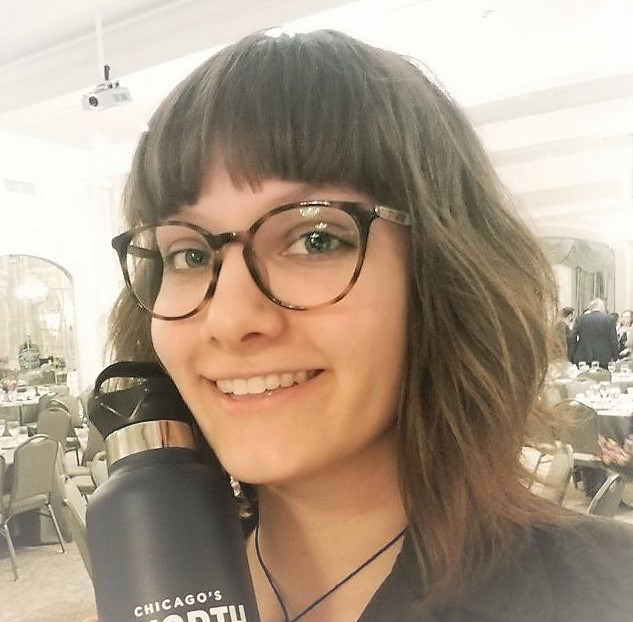
Working on a complex and evolving project also turned out to be something Litvan had experience with by way of her undergraduate project. “My research idea started off a lot more simplistically than what it turned into,” she says, “and that was true of my gallery too. I thought a nice little local art gallery would be nice, then a whopper of a space fell in my lap and I needed to be much more than a gallery. There are artist studios, classes, workshops, concerts, performance art, constantly changing shows and collaborative events with other businesses and the city. It still has the base value of what I wanted to present, but now on a much larger scale.”
Balancing Art and Business
Being an entrepreneur doesn’t mean abandoning your core values, even if the day-to-day work sometimes can seem far from the reason you began. As Litvan says, “I’ve always placed a large value on art, and have always pushed for art appreciation, sales, features and for serious treatment of that profession. I wanted to convey that in my undergraduate research as well as with my gallery.”
Litvan considers herself primarily as an artist rather than an entrepreneur, although her future goals certainly draw on the business skills she’s learned. “Opening and operating my own gallery has its ups and downs. I love coordinating group shows, setting up and installing shows, talking about art as well as selling it. These are all skills that I learned both in my education and on the job. Now I have all the experience and knowhow all those other jobs wanted me to have straight out of school, and I can be my own boss.”
“But it is not a ‘dream come true,'” she adds. “Owning a business leaves little time for personal time, especially when it comes to creative time. I am slowly reclaiming that as my business stabilizes. I don’t know where I will be in 5 years or what type of career I will have, but I know I always want to be involved in and with art.”
Hannah Litvan participated in Albion College’s Foundation for Undergraduate Research, Scholarship, and Creative Activity (FURSCA).

Student Presentation Opportunity at College Art Association Annual Meeting
A session at the upcoming College Art Association (Chicago – February 12-15, 2020) invites undergraduates to participate by sharing their scholarship or creative inquiry in five-minute “lightning” talks. The title of the session is “Lightning and Thunder: Practice and Impact of Undergraduate Research in Art and Art History.”
If you are interested, please send the following to the session Chair: Councilor Sara Orel (orel@truman.edu) by July 23.
- Completed proposal form (click to download).
- A shortened CV (close to 2 pages).
- (Optional) Documentation of work when appropriate, limit to five images as a single PDF, especially for sessions in which artists might discuss their own practice.
CURAH celebrates achievements at annual CUR business meeting
CUR’s annual business meeting concluded last week at the Ohio University. Councilors welcomed new members, elected a new set of officers, and basked in the division’s achievements during the year including two new awards for students and faculty, a substantial endowment (to which you can donate), the Volunteer-of-the-Year award for our beloved outgoing chair, Maria Iacullo-Bird, and a shoutout from the CUR President for this very blog and website.
New Councilors
New councilors present at the meeting include Debra Bourdeau (Embry-Riddle Aeronautical University), David García (Carthage College), and Diana McClintock (Kennesaw State University). Check out their biographies on our councilor page.
Awards débuted in 2018/19
CURAH takes great pride in two new awards in the past year, the Trimmer Travel Award for undergraduates, and the Arts & Humanities Mentor Award. Details for future applications are available on our award page. Behind these two awards lies endowed funding, and CURAH now has the largest endowment of any CUR division… by far. If you would like, you too can donate to the work of the division.
New officers
CURAH’s new chair is Alexa Sand (Utah State University); the vice-chair is Ian F. MacInnes (Albion College), and the secretary is Michelle Hayford (University of Dayton).

Lessons for the Arts and Humanities from CUR’s New Book on Mentoring
The latest book from CUR is Excellence in Mentoring Undergraduate Research, edited by Maureen Vandermaas-Peeler, Paul C. Miller, and Jessie L. Moore. The volume offers both advice (to mentors and institutions) and information about the latest trends in mentoring. The biggest overall argument of the book is that we need to find ways to “scale access to high-quality mentored UR within institutions,” bundling and scaffolding opportunities within the curriculum (217). Given this goal, the book is clearly aimed at a wide audience, but there are some key lessons for faculty in the arts and humanities.
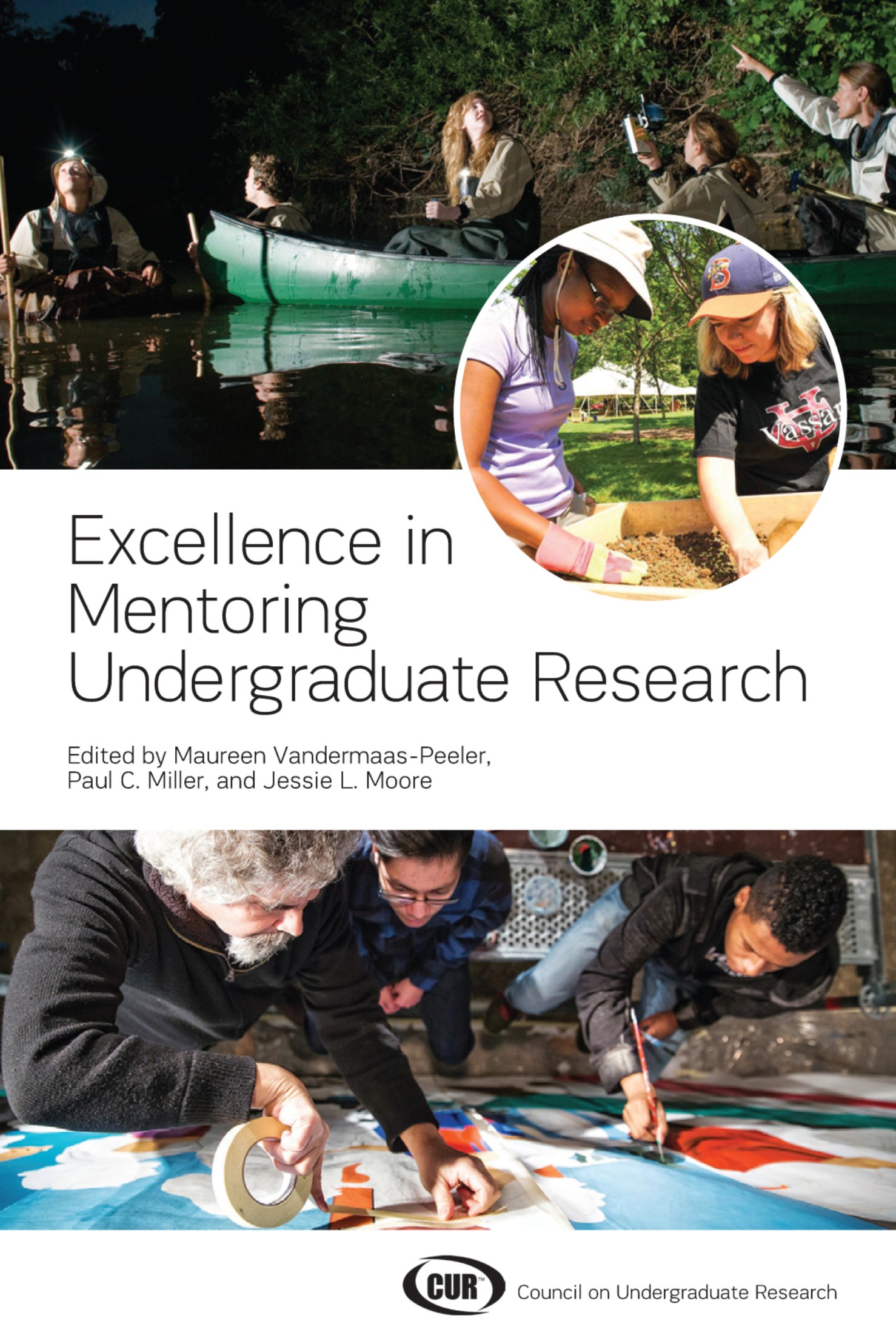
Sections specific to the arts and humanities
As you might expect, the arguments drawn from surveys are less specifically useful to the arts and humanities because STEM projects still dominate undergraduate research. In one survey mentioned, for example, only 6.1% of the respondents were in humanities and arts (23). But five of the volume’s 27 contributors are in the arts and humanities: one artist (Dijana Ihas), three English/writing faculty (Jane Greer, Jessie Moore, and Michael Neal), and CURAH’s own Jenny Olin Shanahan. Their experiences come through in case studies and in specific recommendations. One special section, by music professor Dijana Ihas, is specifically devoted to “mentoring research in the arts” (138-142). Later, in the chapter on integrating research into the curriculum, there appears a short program-level case study of the English curriculum at St. Mary’s University of Minnesota (189-190).
Trending topics
- Including underrepresented students in undergraduate research
- Integrating research into the curriculum
- Co-mentoring
- Faculty development
If you can only read one chapter, what should it be?
- For individual faculty mentors: Chapter 4: “10 Salient Practices for Mentoring,” by Helen Walkington, Eric E. Hall, Jenny Olin Shanahan, Elizabeth Ackley, and Kearsley Stewart
- For anyone involved in curriculum development: Chapter 7: “Undergraduate Research in the Curriculum and as Pedagogy” by Brad Wuetherick, John Willison, and Jenny Olin Shanahan.
- For administrators: Chapter 5: “Supporting Faculty Development for Mentoring in Undergraduate Research, Scholarship, and Creative Work,” by Vicki L. Baker, Jane Greer, Laura G. Lunsford, Dijana Ihas, and Meghan J. Pifer.
Where can I get this book?
Excellence in Mentoring Undergraduate Research is currently available only from CUR’s bookstore, with an ebook available from Google Play.


